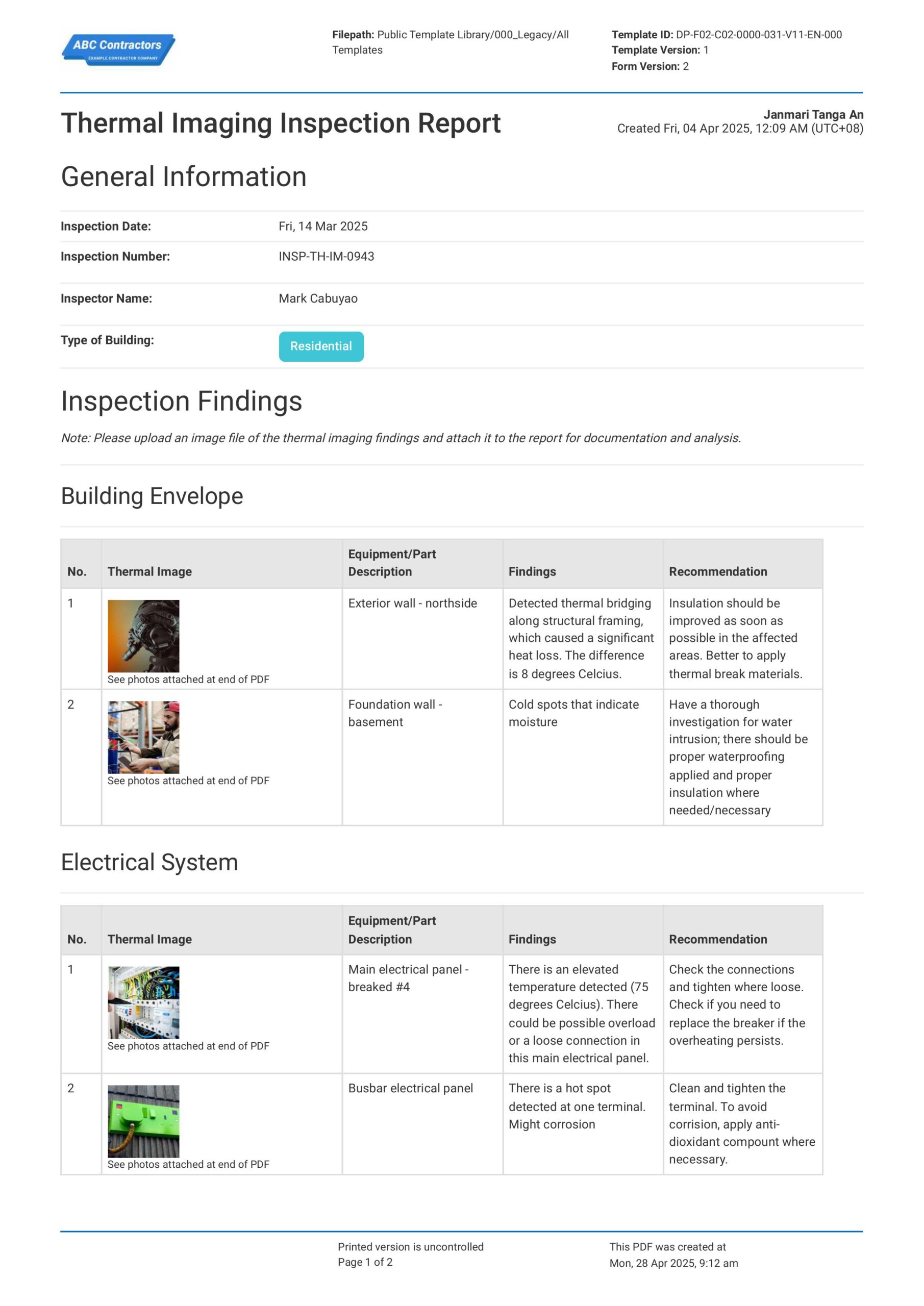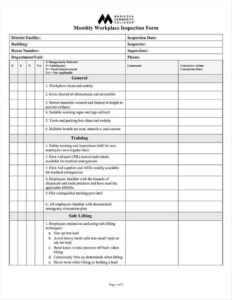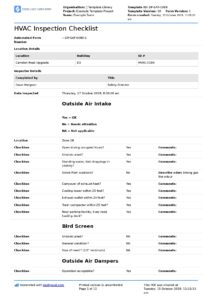Ensuring the safety and efficiency of electrical systems is paramount for any facility manager or business owner. Hidden issues within electrical panels, switchgear, and connections can lead to unexpected downtime, costly repairs, or even dangerous failures. This is where electrical infrared inspections play a critical role, revealing thermal anomalies that indicate potential problems before they escalate into serious hazards.
A successful infrared inspection, however, is only as good as the report that follows. A well-structured, clear, and comprehensive report translates raw data into actionable insights, guiding maintenance teams toward proactive solutions. Without a standardized approach to documentation, vital information can be lost, making it harder to track issues over time and prioritize repairs effectively.

This article will explore the essential components of an effective electrical infrared inspection report and highlight how utilizing a robust electrical infrared inspection report template can streamline your documentation process. A proper template not only ensures consistency and thoroughness but also serves as a vital communication tool, providing a clear roadmap for addressing potential electrical vulnerabilities.
The Core Elements of a Professional Infrared Inspection Report
Creating a professional and useful infrared inspection report involves more than just listing hot spots. It requires a systematic approach to presenting information that is both easy to understand for various stakeholders and detailed enough for technical teams to act upon. An effective report serves as a historical record, a maintenance guide, and a safety document all in one.
At its heart, any robust report begins with administrative details. This includes the client’s name, the inspection date, the facility location, and information about the inspecting technician. These foundational elements ensure proper record-keeping and accountability. Following this, clear identification of the equipment inspected is crucial. Specific panel numbers, circuit identifiers, and equipment types leave no room for ambiguity, ensuring that recommended actions target the correct components.
Key Sections to Include in Your Report
Moving beyond the basic identifiers, a comprehensive electrical infrared inspection report template should guide you through several critical sections:
- Executive Summary: A concise overview of the inspection’s findings, highlighting the most significant issues and overall system health. This allows busy managers to quickly grasp the situation without delving into every technical detail.
- Equipment Details: A detailed log of all inspected electrical equipment, often including photos of the equipment itself for context.
- Inspection Findings: This is the core of the report. For each identified anomaly, you should include:
- Thermal images (infrared) and corresponding visual images.
- Detailed descriptions of the problem, including component identification and temperature readings.
- Severity assessment (e.g., critical, serious, moderate, minor) based on established industry standards and temperature differentials.
- Probable cause, if discernible.
- Recommendations: Clear, actionable steps for addressing each identified issue. These should be specific and prioritized.
- Follow-Up Information: A section for noting when follow-up inspections or repairs are scheduled or completed.
The clear presentation of both thermal and visual images is indispensable. A picture truly paints a thousand words, especially when dealing with hidden electrical issues. Thermal images vividly show temperature differentials, while visual images provide context, helping maintenance personnel locate the exact problematic component quickly and accurately. This visual documentation supports the findings and recommendations, building credibility and understanding.
Furthermore, a good report template encourages consistency in the language used for descriptions and recommendations. Standardized terminology reduces misinterpretations and ensures that maintenance teams across different shifts or locations can understand the issues uniformly. This consistency is vital for long-term electrical asset management and for benchmarking future inspection results.
Transforming Reports into Proactive Maintenance Strategies
An electrical infrared inspection report isn’t merely a record of problems; it’s a powerful tool for developing and refining your facility’s preventive maintenance program. By consistently performing these inspections and diligently documenting the findings, organizations can shift from reactive repairs to proactive problem-solving, significantly extending the lifespan of electrical assets and reducing unscheduled downtime.
The data collected in these reports, particularly the trend analysis from successive inspections, offers invaluable insights. For instance, if a particular connection consistently shows elevated temperatures, even after repairs, it might indicate an underlying design flaw or a recurrent operational stressor. This kind of historical data helps in identifying chronic issues that require more fundamental solutions, rather than just superficial fixes. It allows for smarter budgeting and resource allocation for future upgrades or replacements.
Moreover, these reports play a crucial role in validating maintenance efforts. After a repair is made, a follow-up infrared scan can confirm that the issue has been effectively resolved, ensuring that the system is truly back to optimal operating condition. This provides an audit trail for compliance and quality control, reinforcing the value of regular inspections and precise documentation within your maintenance workflow.
Embracing a systematic approach to electrical infrared inspections, bolstered by a comprehensive reporting structure, is a clear pathway to enhanced operational safety and efficiency. The insights gained from diligently recorded data empower facilities to anticipate potential failures, address vulnerabilities proactively, and maintain a robust electrical infrastructure. This foresight not only prevents costly disruptions but also safeguards personnel and equipment.
Ultimately, investing in thorough inspections and employing a well-designed report template contributes significantly to the longevity and reliability of your electrical systems. It fosters a culture of preventive care, where data-driven decisions lead to sustained performance and a secure operating environment for years to come. Such practices are not merely about compliance; they are about intelligent asset management and a commitment to operational excellence.



